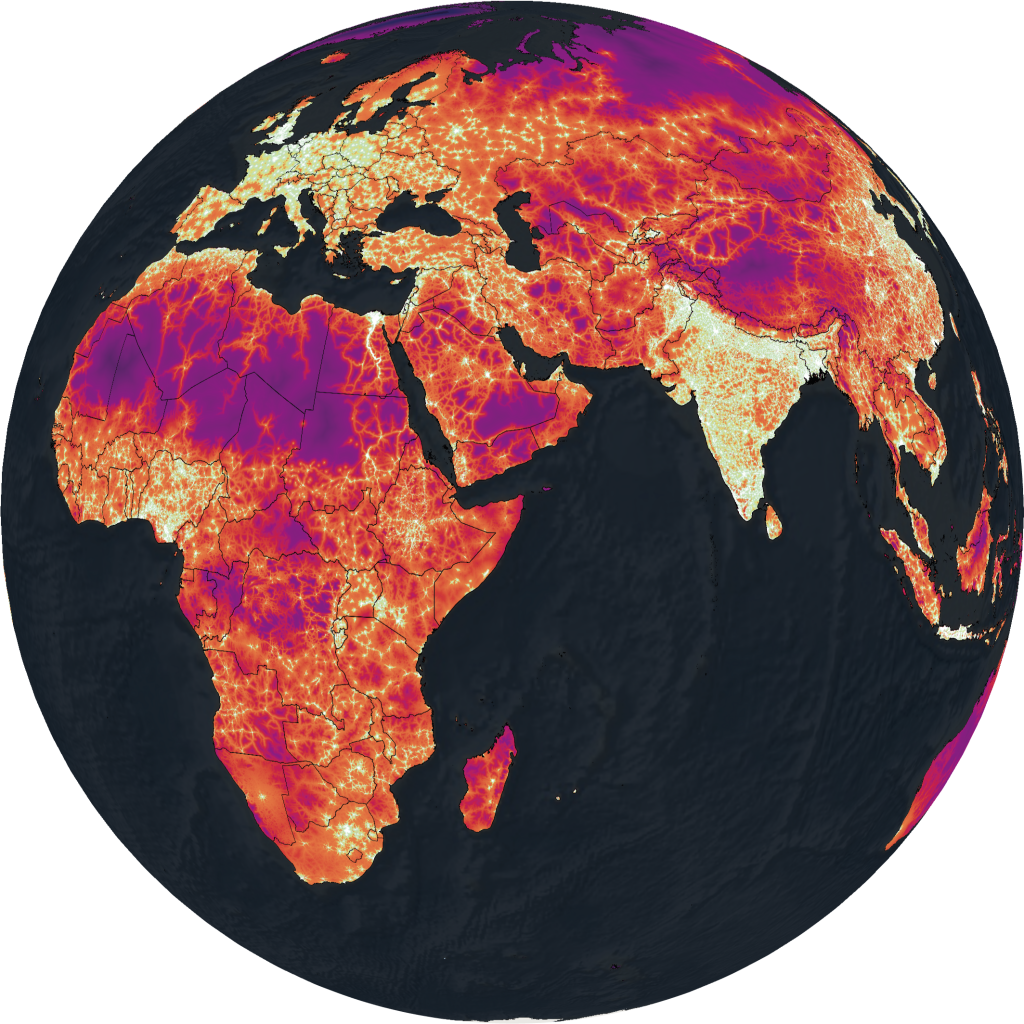Here’s How Long It Takes to Reach a City From Every Place on Earth
A new map measures accessibility to the world’s cities.

The last time that researchers created a map showing the accessibility of cities worldwide, in 2008, Google Maps was three years old. The data used to make the map was from 2000, when printing out directions from Mapquest still felt like an exciting new convenience.
That map showed that there were only a few places left in the world where it would take days of travel to reach a city of 50,000 people or more. Most of the world’s cultivated land was within a two-hour journey of a city. As the geographer Alastair Bonnett wrote in his book New Views, the map showed that “the old distinction between rural and urban society is no longer useful.”
But a new global map of access to cities, published today in Nature, shows that in some parts of the world, there still are disparities between rural and urban life, defined by how quickly a person can reach a city and all the amenities located there.
The new map, created by a team led by the University of Oxford’s Big Data Institute, shows the travel time needed to reach a city from anywhere in the world in 2015. They found that 80.7 percent of the world’s human population—5.88 billion people—live within an hour of a city.
To come to that conclusion, the researchers used data from Open Street Maps and Google, which they write, “capture transportation networks with unprecedented detail and precision.” At a resolution of one square kilometer, they analyze the availability and condition of roads, railways, water, and other elements that might speed or slow a person’s progress towards an urban center. The result is the most detailed map ever created that measures the possibilities of human movement from place to place.
Compare high-income countries to low-income countries, though, and a division appears. In richer countries (in North America and Europe, predominantly) 90.7 percent of people live within an hour of a city. In poorer countries (in sub-Saharan Africa, most notably), 50.9 percent of people live within an hour of the city.
Not everyone wants to live close to a city, of course, but ease of access to urban areas connects people to the resources concentrated there—jobs, hospitals, schools, banks and other financial institutions. Traveling into a city is still the best way to take advantage of these key societal services.
Even with the advances in infrastructure and tools to document it, though, there are still places in the world that are distant from the bustle of city life. The purple spots on the map represent places that are still far away from a city—from a day to more than a week’s journey. These are challenging places in which few people live, but even today there are a few spots left that are isolated from the great agglomerations of humanity that have spread across the globe.













Follow us on Twitter to get the latest on the world's hidden wonders.
Like us on Facebook to get the latest on the world's hidden wonders.
Follow us on Twitter Like us on Facebook